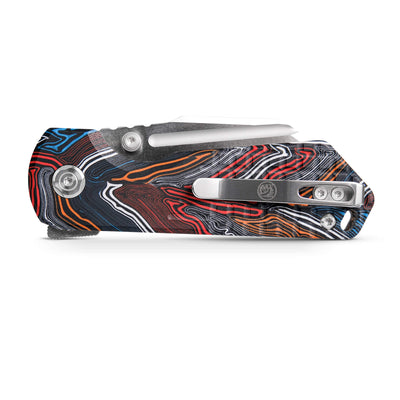Unlock the Hidden World of Fixed Blade Knives: Discover Their Secrets and Uses!
Fixed blade knives have been a staple tool for various activities, from outdoor adventures to everyday tasks. Unlike folding knives, which can be compact and portable, fixed blade knives offer strength and reliability due to their solid construction. Their significance extends across a wide range of fields, including survival situations, hunting, and even culinary uses. As more people engage in outdoor activities and seek reliable tools for their everyday needs, the interest in fixed blade knives has surged. Enthusiasts and casual users alike are exploring the unique benefits that these knives offer, from their durability to their versatility in various environments.

Understanding Fixed Blade Knives
Fixed blade knives are characterized by their non-folding blade, which is permanently fixed to the handle. This design offers enhanced strength and stability compared to folding knives, making them ideal for heavy-duty tasks. A typical fixed blade knife consists of three main components: the blade, the handle, and the tang. The blade can vary in length and shape, depending on its intended use, while the handle is designed for a comfortable grip. The tang, which is the portion of the blade that extends into the handle, plays a crucial role in the knife's overall strength and balance. A full tang, where the blade runs the entire length of the handle, is often preferred for optimal performance.
Types of Fixed Blade Knives
There are several types of fixed blade knives, each tailored for specific applications. Hunting knives are designed with a sharp, curved blade to assist in skinning and field dressing game. Survival knives, on the other hand, are versatile tools equipped for various survival tasks, such as building shelters or preparing food. Tactical knives are built for combat and self-defense, featuring robust designs and often a serrated edge for cutting through tough materials. Utility knives are perfect for everyday tasks, such as opening packages or performing light cutting work. Each type comes with unique features and intended uses, making it essential for users to select a knife that aligns with their specific needs.
Key Features to Consider
When selecting a fixed blade knife, several key features should be considered to ensure optimal performance. Blade material is crucial; stainless steel offers corrosion resistance while carbon steel is known for its edge retention and ease of sharpening. Blade length plays a significant role in usability; longer blades can handle tougher tasks, while shorter blades are more maneuverable. Handle design is also important for comfort and grip; materials such as rubber or textured surfaces can enhance control during use. Lastly, sheath options should not be overlooked, as a good sheath protects the blade and ensures safe storage and transport. Understanding how these features impact performance can greatly enhance the user experience.
Uses of Fixed Blade Knives
Fixed blade knives have a wide range of practical applications. In camping scenarios, they can be used for food preparation, cutting rope, or even making kindling for a fire. When hunting, these knives are essential for tasks like skinning and gutting game. Additionally, in emergency situations, a fixed blade knife can be a lifesaver, providing the ability to cut through seatbelts or create makeshift tools. To effectively use a fixed blade knife, users should practice proper techniques, including safe handling and maintenance. Regular sharpening and cleaning can extend the life of the knife and ensure it remains reliable in critical situations.
Maximizing the Value of Fixed Blade Knives
Understanding fixed blade knives is essential for anyone looking to explore their versatility and functionality. From outdoor enthusiasts to everyday users, these knives offer reliability and strength for various applications. By considering the types, features, and uses discussed, readers can make informed decisions when choosing a fixed blade knife that fits their needs. Embrace the world of fixed blade knives and discover the multitude of options available to enhance your outdoor adventures and daily tasks.










Comments